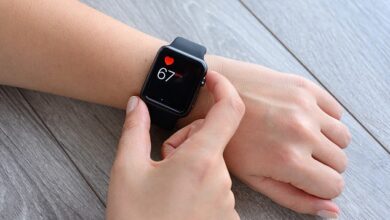Forget BMI – a new ’roundness’ measure predicts how much fat you have inside, regardless of your body size, and tells whether you will die prematurely. Here’s how to find your score…


Imagine trying to find out if you’re dangerously overweight without ever hopping on the scale.
That’s what a new method for determining body size aims to achieve, using a formula that divides your height by your waist size.
It’s called the body roundness index (BRI) and can reveal how much fat you have inside you, regardless of your build – and it’s claimed to be a huge step up from the raw results given by the body mass index used (BMI) charts by doctors for years.
And research shows that the complex mathematical formula behind the BRI is not only much more accurate, but can also determine how likely this fat is to lead to premature death from serious obesity-related conditions such as heart disease, diabetes and cancer.
The BRI was created more than a decade ago by researchers in the US, who were looking for more accurate ways to assess unhealthy weight gain. Dr. Diana Thomas, a mathematician who came up with the new formula, recently told how one day she looked in the mirror and thought, ‘I’m not a cylinder – I’m more like an egg. But how do I record that?’
For decades, doctors have monitored health using the BMI chart, which uses weight and height measurements to obtain a reading that flatly indicates whether we are a healthy size, underweight, or obese: a healthy BMI range is between 18.5 and 25.
But the system has long been recognized as flawed, as a muscular athlete can be classified as obese simply because muscle is denser than fat.
At the other end of the scale, a slim person with little muscle but a potbelly – indicating a build-up of visceral fat – might be considered healthy.
Visceral fat is the unhealthy type that builds up around organs such as the liver, increasing the risk of conditions such as type 2 diabetes and heart disease by disrupting the body’s normal balance of glucose and insulin.

Dr. Diana Thomas, a mathematician who came up with the new formula, the body roundness index (BRI), which shows how much fat you have, regardless of your size
Basically, BMI assumes that if your weight is too high, so is your level of visceral fat.
With BRI, however, you enter your height and waist measurements into the BRI calculator – you can find one online. A complex formula is then used to arrive at a score that reflects how slim you are from head to toe, or whether you are rounder in the middle due to visceral fat.
BRI scores range from 1 to 16 – those at the lower end are likely to be underweight and at risk of developing thinning bones, infertility and a weakened immune system.
Those with a score of 3.5 to 7 are likely to be at a healthy weight, with little excess belly fat. Anyone who scores above 7 is in the danger zone for obesity and poor health.
The BRI attracted interest after a study in the Journal of the American Medical Association Network Open, published in June, found that it accurately predicted which middle-aged men and women were at risk of dying from obesity-related conditions.
Scientists from Beijing University studied nearly 33,000 adults who participated in a twenty-year health study. They used volunteers’ data on height and waist circumference to determine each person’s BRI, before comparing it with deaths from all causes.
The results showed that the risk of premature death among those with the highest BRI was 49 percent higher than among those in the lower range.
And a study published in the journal Lipids in Health and Disease in 2023 showed that the BRI was also a good indicator of who is most likely to develop colon cancer.
Researchers from China studied more than 53,000 people and found that people with a high BRI score were up to five times more likely to fall victim to the disease than those with a low score.
BMI was originally designed to provide guidance on public health strategies – not to quantify an individual’s health – but was popularized as such in the US in the 1970s. A 2019 study published in the journal BMJ Open Sport and Exercise Medicine found that many top English rugby players – based on their BMIs – were classed as obese.
Tom Sanders, professor of nutrition and dietetics at King’s College London, told Good Health: ‘Body fat in itself is not harmful; what matters is where it is stored. Subcutaneous [just below the skin] fat on the hips and thighs is largely harmless.’
But Professor Sanders questions whether the BRI is a more accurate indicator of health than a tape measure. “The simplest and most robust measure of unhealthy fat is waist circumference,” he says. ‘This is what the International Diabetes Federation recommends instead of BMI to calculate the risk of type 2 diabetes.’
To properly measure your waist, exhale, relax your abdomen and place the measuring tape just above the navel.
The NHS says anything above 37 inches (94 cm) in men and 31.5 inches (80 cm) in women is considered a high risk of ill health. The threshold is lower in men of African-Caribbean, South Asian or Chinese descent – about 35.5 inches (90 cm).
An article published earlier this month in Current Problems in Cardiology suggested that both BRI and BMI may not be as good as waist circumference at predicting who will develop type 2 diabetes.
Mike Lean, professor of human nutrition at the University of Glasgow, says: ‘Stick to the measure that clearly works: waist size.’




